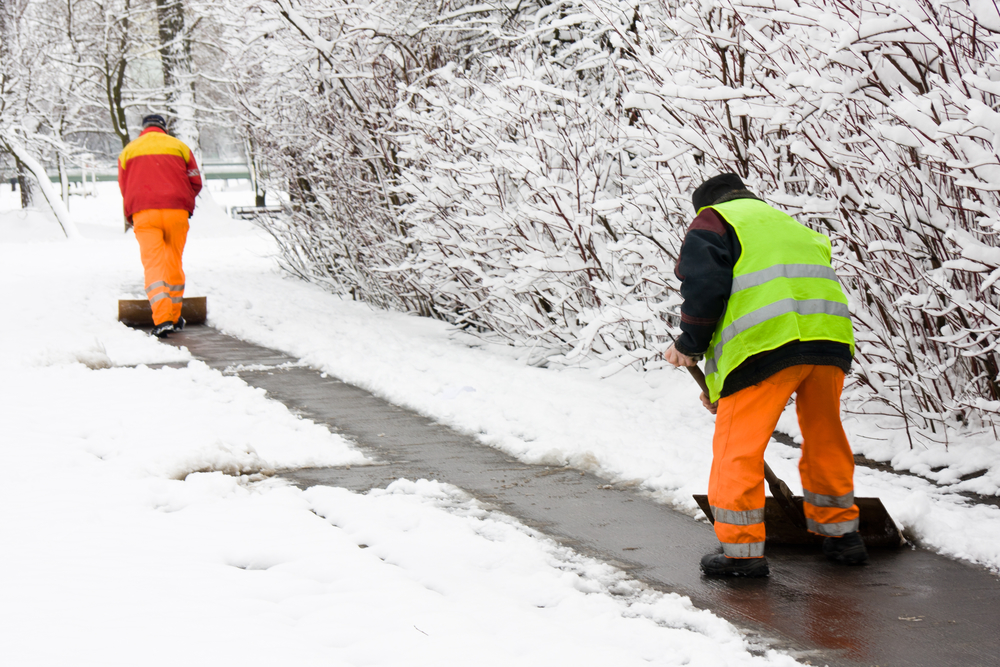
During and after a cold, wet winter, uneven sidewalks and cracks in concrete can pose tripping hazards. Winter weather is the enemy of concrete, as excessive moisture absorbed in tiny capillary spaces in the concrete and in the ground itself freezes and thaws. This process of frost heaving can lead to sunken slabs that create tripping hazards that start in the winter and remain for you to deal with once spring has sprung.
The type of soil under concrete and how it has been prepared before the concrete was poured determine the likelihood that frost heaving will occur. Light, loamy soils, especially when not sufficiently compacted, offer many opportunities for ice formation under the surface. Water expands 9% as it freezes; this swelling lifts the concrete, especially if air is not properly entrained or captured when it was laid. When this occurs, slabs may fall back into place, but often they are misaligned, which causes unevenness.
In addition, the process causes concrete to crack. While some cracking is normal in concrete surfaces, excessive cracking can affect the stability of the concrete. When the surface freezes, pressure within the material loosens cement flakes from the surface. Known as scaling, this process can disintegrate concrete and lead to holes and cracks that can make walking hazardous, make the surface unsightly, and make the concrete so broken that only re-laying it will fix the problem.
Both unevenness and cracking pose problems for a property owner who tries to minimize risk of injury by cleaning their sidewalk in the winter. An uneven slab might not be obvious when a sidewalk is covered with snow; hitting a ridge of uneven concrete can damage snow blower blades and cause passersby to lose their footing. When you try to facilitate melting and reduce slipperiness, chloride salt and de-icers can increase the chance of cracks and scaling.
Properly preparing the soil before laying concrete, and then insuring that the concrete is mixed correctly and laid properly can prevent many problems. Unfortunately for you if you purchased property where these steps were not properly done years ago, you cannot retrace the steps and may have to deal with the consequences of sloppy work in the past. During the winter, there is little to do to stop frost heaving and its impact on slabs of concrete. Concrete lifting or mud jacking cannot be done effectively due to the freezing temperatures, which make penetrating the soil difficult until spring.
You do have more ability to stop or reduce cracking if you regularly seal the concrete with commercial products that contain chemicals such as silane or siloxane. These products reduce the amount of water that the concrete can absorb, which may limit cracking. You can also fill cracks to block water absorption.
When spring comes, if you are faced with uneven sidewalks and cracks, Lift Right Concrete can help you.